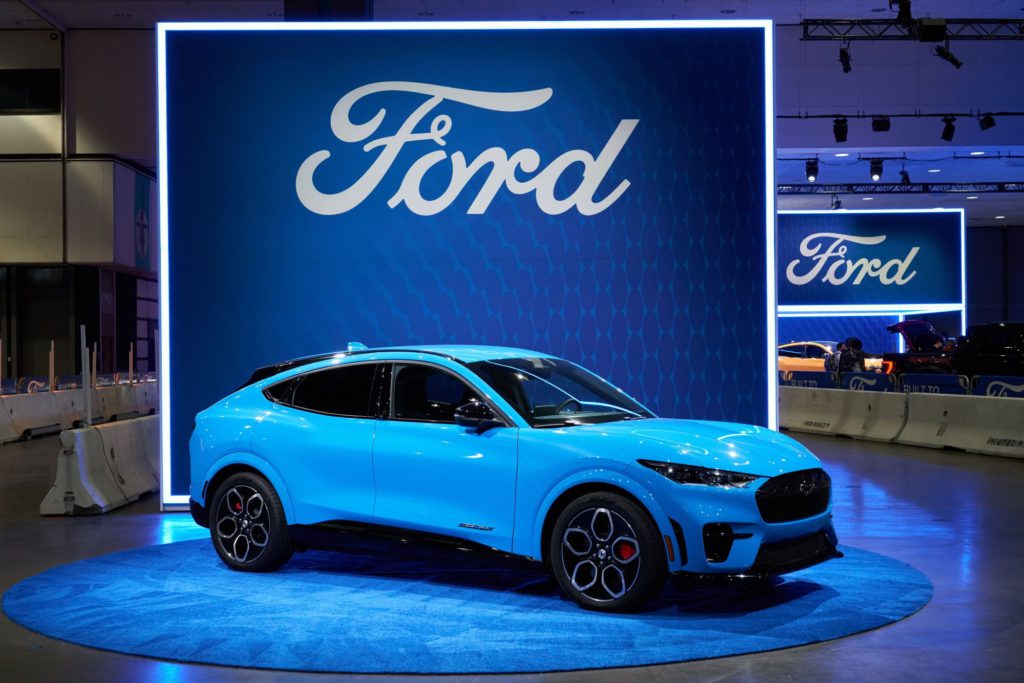(Bloomberg) — Ford Motor Co. will separate its fast-growing electric vehicle operations from its legacy combustion engine business in a historic reorganization of the 118-year-old company.
The new Ford Model e unit will scale up the automaker’s EV offerings and develop software and connected-vehicle technology and services for all of the company. Ford Blue will focus on combustion vehicles, cutting costs and simplifying operations.
Ford’s ambition will be “to become a truly great, world-changing company again, and that requires focus,” Chief Executive Officer Jim Farley said in a statement Wednesday. “We are going all in, creating separate but complementary businesses that give us startup speed and unbridled innovation.”
See also: How Ford Wrestled ‘Sexy’ Back From Musk in Tussle Over Trademark
The automaker plans to spend $50 billion on its stepped-up EV strategy, Farley said on a call with analysts. The investment covers 2022 to 2026, after Ford had previously targeted $30 billion from 2021 to 2025.
The shake-up — along with new targets for higher EV production and overall profitability — sent Ford shares up 7.3% to $17.92 at 9:41 a.m. in New York, the biggest intraday gain in almost two months.
Ford said it plans to be able to make 2 million electric vehicles annually by 2026, a big step up from the 600,000 it’s aiming for in 2024. The automaker also is now targeting adjusted earnings before interest and taxes of 10% by 2026, up from as much as 8% expected for this year.
Ford’s split represents a “better allocation of dollar and human capital,” BofA Securities analyst John Murphy wrote in a note to clients. The move will also allow Ford to attract more EV talent and gain access to a lower cost of capital including through green bonds, said Murphy, who has a buy rating on the stock.
What Bloomberg Intelligence Says
“We assume that a potential separation wouldn’t happen until after 2026, making longer-dated issues at Ford Motor the most exposed. But Ford could consider a variety of mechanisms, including another debt tender or raising debt at the new company, as a tool eliminate longer-term debt.”
— Joel Levington, BI credit analyst
Accelerating Ford’s transition to a battery-electric future has been a major focal point for Farley. He raised the automaker’s wager on EVs months after taking over as CEO. Bloomberg News first reported last month that the company was contemplating a further increase in expenditures toward EVs, and that Farley had wanted to wall off electric operations from Ford’s internal combustion engine business.
Read more: Ford CEO Is Considering Ways to Run EV Business Separately
Farley said Wednesday that Ford “carefully” considered a spinoff as it weighed options to separate the business lines. The chosen path allows Ford to keep its combustion-engine operations as the “profit and cash engine” of the company, he said.
Implementing major structural change at Ford requires the backing of the company’s founding family, which controls the automaker through a special class of stock.
Farley has been working closely with Doug Field, the former head of Apple Inc.’s car project, on reviewing Ford’s operational and manufacturing structure to prepare for the company ramping up its EV offerings. It’s boosted output of the electric Mustang Mach-E and prepared more production capacity for the F-150 Lightning pickup going on sale this spring.
Under the new structure, Farley will also assume the role of president of Ford Model e, while Field will be the unit’s chief EV and digital systems officer. Kumar Galhotra will serve as president of the Ford Blue business.
Through Tuesday’s close, Ford shares soared 151% since Farley became CEO in October 2020. While the stock has pulled back since mid-January, its market capitalization was slightly ahead of General Motors Co.’s.
“Is this about winning? 100%,” Farley said on the call Wednesday. “We want to beat the old players. We want to beat the new players.”
(Updates with share trading, analyst comment beginning in fifth paragraph.)
More stories like this are available on bloomberg.com
©2022 Bloomberg L.P.











